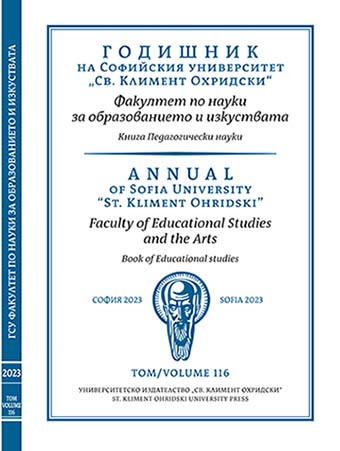The Effects of Sign Language on Engagement in Early Literacy Activities for Young Children with Autism
The Effects of Sign Language on Engagement in Early Literacy Activities for Young Children with Autism
Author(s): Heather Cottle, Janice Myck-WayneSubject(s): Social Sciences, Education, Inclusive Education / Inclusion
Published by: Софийски университет »Св. Климент Охридски«
Keywords: Early Literacy; Autism; Sign Language; Augmentative and Alternative Communication; Special Education
Summary/Abstract: Language Arts and Literacy is one developmental domain that is addressed in the early childhood classroom (California Department of Education, 2008; California Department of Education, 2013, p. iv). Included within the developmental domain of Language and Literacy is, participating in reading activities with others, expressive and receptive language skills, engagement, as well as, emergent literacy skills and augmentative and alternative communication (AAC) (California Department of Education, 2008; California Department of Education, 2013; Christie et al., 2014; Machado 2016; Ogletree, 2021; Westerveld et al., 2017). The skills that are included within the developmental domain of and standards of language and literacy, such as engagement in literacy, serve as the foundation in which young children are building upon to support later reading success (California Department of Education, 2008). Additionally, the importance of interest and engagement in literacy activities has been documented as it plays a key role in developing early literacy skills (California Department of Education, 2008). Therefore, due to the impacts of engagement in literacy, emergent literacy and AAC, on a child’s future reading success, it is critical that these skills are thoroughly and effectively addressed in the early childhood classroom. Students with autism tend to present with unique needs in the area of language and literacy development (Chen & Kuo, 2017; Fleury & Hugh, 2018; Fleury & Lease, 2018; Lanter et al., 2013; Westerveld et al., 2017). Approximately 30-50% of students with autism who are a school-age struggle in reading (Ariculi et al., 2013; Nation et al., 2006; Ricketts, 2011, as cited in Wicks et al., 2020). Students with autism have unique areas of need in developing emergent literacy skills and engaging in early literacy activities (Chen & Kuo, 2017; Fleury & Lease, 2018; Westerveld et al., 2017). A unique area of need is meaning-related skills, including comprehension of text (Chen & Kuo, 2017; Westerveld et al., 2017). An additional unique area of need is joint attention with early literacy activities (Fleury & Hugh, 2018; Wicks et al., 2020). It has been found that students with autism engage less and request shared reading less often than typically developing peers (Fleury & Hugh, 2018; Lanter et al., 2013). Educators must take intentional steps to support students with autism in the classroom and implement various strategies. For example, AAC and embedded instruction are strategies that educators can implement to support the development of critical emergent literacy skills (Sandall et al., 2019; Olgetree, 2021; Rahn et al., 2019). However, although research exists on the importance of intentionally developing early literacy skills, AAC and embedded instruction, there is little current research on how embedding sign language, a form of unaided AAC, impacts engagement in emergent literacy activities (Cologon & Mevawalla, 2018; Rose et al., 2015; Tan et al., 2014). This research study explored the use of using core and fringe vocabulary using sign language to increase emergent literacy skills in young children diagnosed with autism. There were four children who participated in this study. The children in this study were enrolled in a special day class for children in transitional kindergarten and kindergarten (ages 4-5). The results of the study demonstrated that some emergent literary skills improved when sign language was introduced during circle time, specifically shared reading time.
- Issue Year: 116/2023
- Issue No: 1
- Page Range: 9-35
- Page Count: 27
- Language: English

